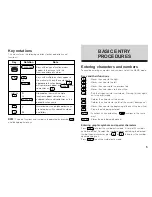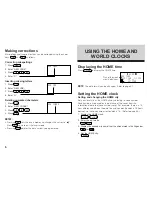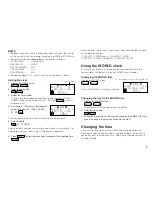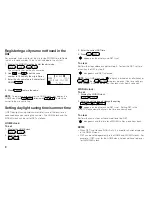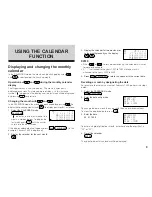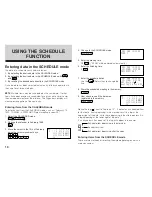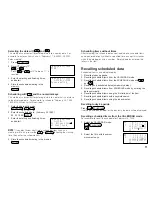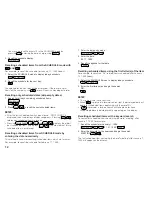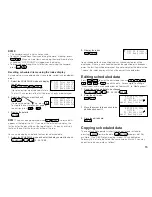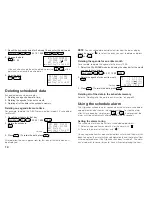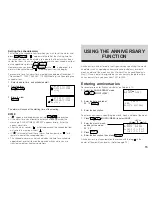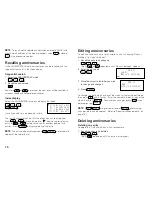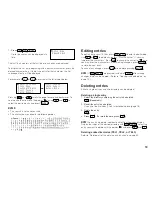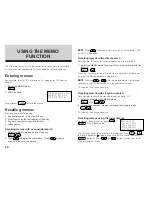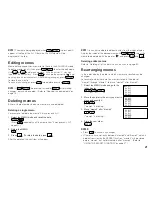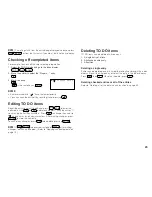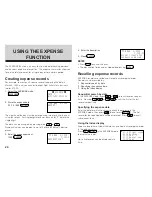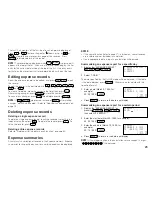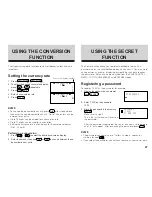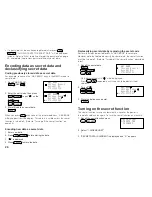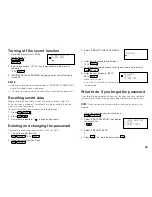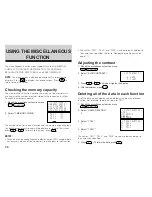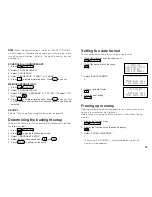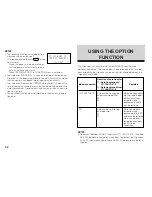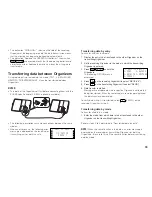
19
1. Press
TEL
2nd
INDEX
.
Up to five names can be displayed at a
time.
The first 18 characters of the first line of each entry are displayed.
To display the first entry beginning with a particular character, press the
desired character key. If there is no entry for that character, the first
subsequent entry will be displayed.
For example, if
S
or
P
is pressed at the left display below:
Pressing
and
scrolls the page forward and backward. To
see the whole entry, move the pointer “ ” using
and
to
select the desired entry, and press
ENTER
.
NOTES:
• This search is not case sensitive.
• The characters are sorted in the following order:
Editing entries
To edit an entry, recall it, then press
2nd
EDIT
to enter the edit mode.
Use
DEL
or
BS
to delete characters. With the cursor “
■
” you may
type over the characters. Press
INS
to change the cursor to “ ” and
you may insert new characters. After making changes, press
ENTER
to store the new entry.
To cancel any changes, press
C
•
CE
twice before pressing
ENTER
.
NOTE:
If
2nd
ENTER
are pressed instead of
ENTER
after making
changes, data can be copied. (Refer to “Copying scheduled data” on
page 13.)
Deleting entries
Either a single entry or an entire directory can be deleted.
Deleting a single entry
1. Select the directory containing the entry to be deleted.
TEL
(Repeatedly)
2. Recall the entry to be deleted.
Use any of the methods (1 to 3) mentioned above (page 18).
3. Delete the entry.
DEL
4. Press
Y
. (To retain the data, press
N
.)
NOTE:
You can also delete individual entries from the index display.
Display the index of the desired directory with
2nd
INDEX
, select the
entry you want to delete with the pointer “ ” and press
DEL
and
Y
.
Deleting entire directories (TEL1, TEL2, or TEL3)
Refer to “Deleting all of the data in each function” on page 30.
Hamilton Olivia
Louis Greg
MacDonald Edith
Scott Teresa
Smith Robert
Scott Teresa
Smith Robert
Weiner Mike
Space
Davis Mike
Edwards Bob
Содержание YO-150
Страница 45: ...43 MEMO ...

